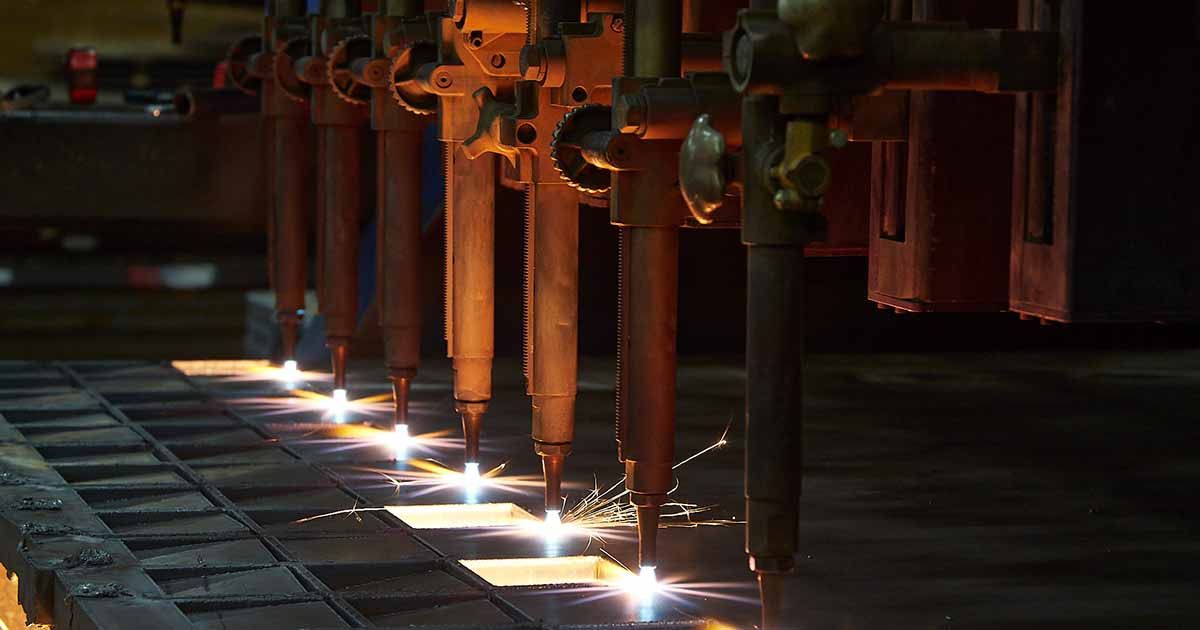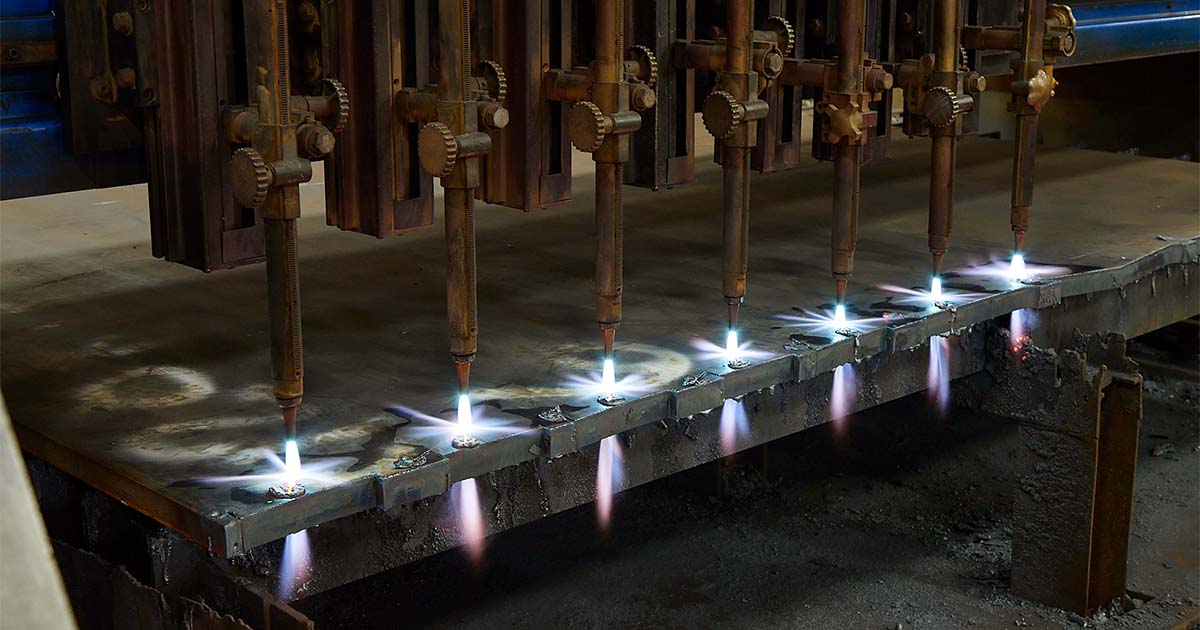
We collect basic website visitor information on this website and store it in cookies. We also utilize Google Analytics to track page view information to assist us in improving our website.
If you’re passionate about metal cutting or just keen to learn more, you’ve landed in the right place.
For over 38 years, Amber Steel has been at the forefront of metal cutting services, specializing in laser cutting, flame cutting, and plasma cutting. Our expertise has carved a niche in this cutting-edge industry, delivering precision and excellence across industrial projects big and small.
In our blog, we’ll share a mix of useful tips, innovative applications, our thoughts on sustainability in steel cutting, and more. Expect stories from the cutting floor, insights into how our processes can streamline projects across industries, and a few lessons we’ve learned along the way.
While we keep some of our trade secrets under wraps, this blog is designed to offer valuable nuggets of wisdom that you simply won't find anywhere else. Whether you’re a professional in the industry or someone fascinated by the possibilities of metal cutting, you'll find something of value here.
So, stick with us as we delve into the finer points of metal work. We’re glad to share our insights and lead discussions that matter to our industry.
How precision metal cutting propels the aerospace industry, from constructing lighter frames to enhancing aerodynamics.
The role of advanced metal cutting in automotive manufacturing, driving innovations in vehicle design and efficiency.
All about the robust and versatile process of flame cutting, ideal for tackling thicker metals with precision and ease.
Discover the art of crafting metal furniture, where cutting techniques meet design to create both functional and aesthetic pieces.
A behind-the-scenes look at the mechanics of metal cutting technologies and the science that makes them tick.
Laser cutting is where extreme precision meets efficiency, allowing for intricate designs and clean finishes.
The critical role of precise steel cutting in developing reliable and intricate medical devices.
How steel cutting supports the oil and gas industry with components that withstand extreme environments and pressures.
Known for its speed and versatility, plasma cutting slices through conductive metals with hot plasma.
Safety first! Tips and insights on maintaining a safe environment while handling powerful metal cutting equipment.
The backbone of construction, where steel fabrication and cutting technologies create frameworks that shape skylines.
Sustainability
A look at sustainability in metal cutting, focusing on practices that reduce waste and conserve energy to protect our planet.

We’ve talked extensively about the different forms of metal fabrication cutting, machine types, materials – but what about the Heat Affected Zone (HAZ)?
The HAZ is an area of metal that hasn’t been melted and has instead undergone changes in properties due to being exposed to high temperatures during the welding process. And today, we’ll be exploring all there is to know about it with the professionals at Amber Steel.
The cause of the Heat Affected Zone (HAZ) during the welding and cutting processes stems from the significant thermal energy present, which often goes beyond the material’s base melting point. This thermal cycle is different to the prior process of the base material, causing distinct changes to its microstructure (material structures seen at the micro level).
The size of the HAZ is typically influenced by thermal diffusivity, which is dictated directly by the material’s thermal conductivity, density, and heat capacity. Materials that have a higher diffusivity disperse heat quicker, leading to a narrower HAZ width.
On the flipside, materials with a lower diffusivity retain heat for longer, resulting in large HAZ zones. As well, HAZ extension directly correlates with the amount and duration of the heat exposure.
When welding, processes that utilize lower heat input tend to cool faster, as expected, and results in smaller HAZ. Conversely, those utilizing higher heat input cool slower, producing a larger HAZ.
Welding speed also has a pretty significant impact on HAZ size, with slower speed resulting in larger zones and reduced cooling rates. The weld's geometry also impacts heat dissipation, with larger heat sinks promoting faster cooling.
Just like the welding process, the cutting process has an impact on HAZ as well. Higher temperatures and slower cutting speeds typically result in larger HAZ, while lower temperatures and higher speeds result in smaller HAZ.
Different cutting methods produce differing results: for example, shearing and waterjet cutting create no HAZ, while laser cutting forms a small, localized HAZ near the cut area. Plasma cutting produces an immediate HAZ, and finally, oxyacetylene cutting (a thermal cutting process using pure oxygen and fuel gas) yields the widest HAZ because it utilizes high heat and a slower speed.
The HAZ is categorized into distinct zones based on proximity to the heat source:
Cutting or Weld Zone: The region where the material undergoes fusion or cutting.
Fusion Boundary: Marks the edge of the molten and solid phases.
HAZ Proper: Where the microstructure of the non-melted metal alters due to heat exposure.
In conventional steels, the HAZ may include zones such as grain coarsened, grain refined, intercritically heated, and tempered zones, depending on cooling rates and material properties.
Heat tint (also known as temper colours), visible near welds in stainless steel, can indicate temperatures lower than those forming the HAZ. These colours can vary with temperature and oxidation resistance, offering insights into the thermal history of the metal itself - interesting, right?
Much like the lines in a stump indicates the age of a tree.
Factors such as the material’s surface roughness and protective coatings can have an impact on the heat tint intensity but don’t actually affect the extent of the HAZ itself. By understanding these factors, you can manage the HAZ effects and ensure the overall structural integrity and performance of welded/cut components.
Due to the heating that occurs within HAZ, the microstructure and properties of this area change, so they differ from the base material. Unfortunately, these changes can be undesirable depending on the material in question, as they can cause higher or lower strength, susceptibility to cracking, reduced corrosion resistance, and less toughness. Due to this, HAZ is typically an area where material failures occur.
A very common side effect is reduced corrosion resistance when working with the high temperatures experienced by HAZ, particularly in stainless steel. The heat created in the weld bead area causes chromium carbides to precipitate the surrounding grain boundaries in HAZ, which can cause the chromium content to drop below 10.5%, causing the steel to lose its ability to form passive film - which results in it no longer being stainless.
This can cause irregular corrosion (or sensitization decay).
In other steels, hydrogen embrittlement is another potentially lackluster side effect associated with high temperatures. Atomic hydrogen dissolved in the weld metal is tripped within the cooling weld, causing it to be rejected into the HAZ.
The hydrogen then diffuses to the region with the highest strain, creating extra pressure within the lattice and possibly resulting in cracking. However, it is possible to remove hydrogen through the correct selection of welding parameters, as well as preheating or postheating when necessary.
In certain instances, the HAZ may exhibit greater hardness and strength than the parent material, presenting potential challenges in component design and use. Alternatively, in materials like aluminum, the HAZ often shows reduced hardness and strength compared to the parent material, posing different challenges for component design and application.
The Heat Affected Zone doesn’t have to deter you from your next metal fabrication project. It’s possible to reduce the presence and impact of the Heat Affected Zone, including alleviating issues such as cracks, corrosion, embrittlement, etc. It’s possible to achieve these results by utilizing heat treatments after the welding/cutting process.
These heat treatments are generally applied after the fact and will depend on the required properties/intended changes you need to address. The material in question could require a precipitation hardening treatment or a softening treatment – it just depends on the material. Also, it's important to know that the heating treatment is typically limited by the comparative size of the part/the torch or furnace being utilized.
You can also use cutting as an alternative heat treatment to help reduce the effect of the HAZ. This is achieved by either grinding or cutting, although special care is required to avoid applying more heat to the material.
Generally speaking, machining is usually the most effective way to remove the presence of HAZ completely. However, this can reduce the material yield while increasing labour and machine time, so it isn't a foolproof method.
Finally, heat tint from oxidization can be ground away or removed simply with some fine sandpaper, so there's no need to stress about it. This helps expose the underlying layer and activate what we call the "self-passivation" of the chromium. However, this has the potential to weak the part, so don't overdo it.

In an ideal scenario, HAZ is mitigated by choosing the right welding/cutting process based on the material in question. This is why you need to work with professionals who understand the best methods for your planned metal fabrication processes. Luckily for you, Amber Steel has everything you need and the industry know-how to execute even complicated metal fabrication projects.
Whether it's a cutting-edge project or a niche job, the team at Amber Steel comprises leading industry experts who specialize in laser, plasma, and flame cutting technology. Our business has been around since 1986 and has served the Waterloo Region for years. We provide production-ready parts to our customers, tailored to match them with the right parts for the job.
At Amber Steel, sustainability guides all facets of our operations. We understand our role in preserving our planet for future generations, and it's something so important to us that it's a key element of our business model.
Central to our philosophy is responsible resource management, which is evident in our steel cutting and manufacturing processes. We prioritize efficient resource use, leaving no room for waste. Each piece of steel is utilized to its maximum potential.
Rather than discarding materials, we repurpose them thoughtfully, ensuring they contribute to new creations or applications. This dedication minimizes waste and conserves valuable resources, aligning with our sustainability goals.
For more information on how Amber Steel can best serve you, contact us for more details.